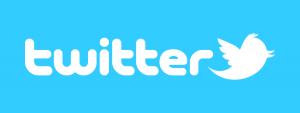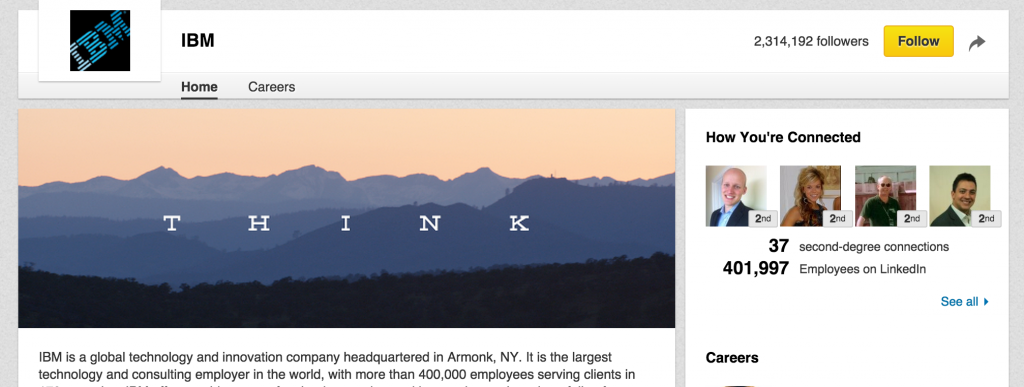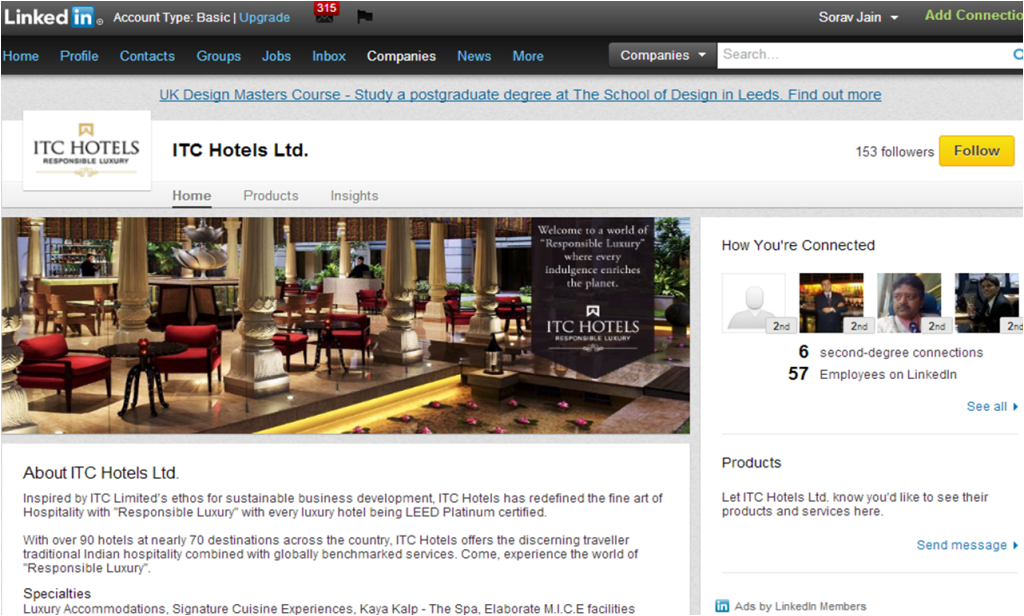The concept of social media is at the top of the agenda for many businesses today (Kaplan & Haenlein, 2010). The use of social media marketing can be a brilliant way of promoting your business to a wide range of potential consumers. The list is now endless, with Facebook, Twitter, Instagram, and YouTube being a small selection, and perhaps some of the most well known. Receiving immense levels of traffic on a daily basis, these platforms are the perfect way of promoting your brand, but which do you use? One, two, three… all of them? Choosing which outlets to use is critical to your brand as each have varying purposes and, perhaps more importantly, audiences. It should be noted that there is no one-size-fits-all for social media marketing and companies must further tailor their strategies to their particular brand (Schulze et al, 2015).
1. Facebook

This platform boasts around 1.4 billion users, up 170 million in one year (Kiss, 2014), and predicted to rise to 4 billion by 2017 (Zachariadis, 2014). To put this in perspective, the population of the USA and Russia are only 322 million and 142 million respectively. Facebook is at the forefront of social networking in terms of user consumption. According to Scott Galloway, Facebook is the platform people of all ages spend the most time on. Additionally, Facebook boldly states that it can ‘help you to reach all of the people who matter most to your business’.
The good…
Innocent
This brand are reaching their target audience perfectly by creating authentic, eye-catching, and interesting content. They tap into user’s sense of humour by occasionally adding the odd joke, which seems to go down very well with their audience as they often boast ‘likes’ in the thousands per post. By creating a positive brand image, brands can effectively develop and enhance their relationships with customers (Bartlett, 2010 and Monseau, 2009).
… and the bad.
Costa Coffee
To be frank, who wants to read this? Most likely not very many people. We already know that text posts don’t do as well as those including photos of videos, but it’s taken another step down when that text post is dull. One disadvantage of social media is that of the frequent and rather unpredictable situation regarding negative Facebook comments made by users (Dekay, 2012). All posts are open to receive these comments, but dull posts such as this are perhaps more prone to it, consequently damaging the brand image.

2. Twitter

With 288 million users, Twitter is far from Facebook in terms of usage. However, as noted by Dean Ronnie, Content Marketer with Micromedia.co.uk, ‘if you can tweet, you can advertise on Twitter.’ With instantaneous information sharing, Twitter allows companies to engage with others users in a concise fashion, keeping within the character limit. With the added option of visual content, Twitter is at the forefront of social media, allowing for exciting and professional digital marketing strategies to be considered. With a direct correlation between social media engagement and revenue, Sony announced in June 2012 that they had earned a three million dollar increase in sales from their presence on Twitter (O’Flynn, 2012).
The good…
ASOS
This brand are social media leaders when it comes to interacting with their audience. Not only do they converse, but they do so in a way that is fitting to their target social demographic. Everyone likes to feel as though a brand has put a little effort in now and again, and ASOS show just that. With humour and kindness, they really put the message across that their brand is committed to their digital marketing strategy and as a consequence, their customers/users.

… and the bad.
Kellogg’s
One key to success on social media is simply to be interesting (Kaplan and Haenlein, 2010). I can’t speak for everyone, but I’m sure that I’m not alone when I say that I’d rather not see these tweets on my timeline.
3. LinkedIn

Having a self-confessed 300 million users, LinkedIn is most commonly known as the ‘professional social media platform’, used to discover business opportunities, deals, and new ventures (LinkedIn, 2015). According to Reid Hoffman, 27% of LinkedIn subscribers are recruiters, making it the perfect platform for reaching out to a corporate audience.
The good…
IBM
Back in 2012, IBM topped the LinkedIn rankings with 1.8 million interactions and they certainly haven’t stopped since, with over 2.3 million followers as of 2015. The technology giant share varying posts on the site, from around the web and their own content-hub. Having a range of sub-groups certainly doesn’t harm their brand, such as IBM Big Data and Analytics and IBM Cloud Computing. With these specialist sub-sites, users can automatically tell how much thought and effort IBM have placed on their social media strategy, and it is certainly paying off.
… and the bad.
ICT Hotels Ltd
With an array of out-of-focus photos and minimal interaction, ITC Hotels are falling far behind with their social media strategy, or lack thereof.
4. Google+

With 300,000,000 users, Google+ is a social network and social later for Google services. Google itself has implied that activity has a positive impact on where a company ranks within their search engine (Rider, 2015). Whether or not your company actively engages in Google+, it is important to partake in Google My Business; listing your location, opening hours and contact details in Google’s search results.
The good…
Hugo Boss
As one of the top high-end fashion retailers, Hugo Boss’ expertise lie in visual design. They’ve managed to carry their clean image onto this social platform seamlessly, with in-turn reads like a glossy magazine. As a result of this success, they have well over 3 million followers to their name on this platform alone.
… and the bad.
Kodak
Given that Kodak are a brand all about visual products, their Google+ page is largely inundated with text. Empty of any eye-catching ‘Kodak Moments’, those who visit the page are met with quite a dull, lifeless timeline of unappealing posts.
5. Instagram

Primarily a visual sharing platform, with both photo and video features, Instagram holds an impressive 300,000,000 users. With features similar to Twitter (and now Facebook), you can use hashtags and include other user’s handles as a direct route of connecting to others, who may in turn ‘regram’ your posts, allowing for additional views. With 90% of users are under 35 (Collins, 2015), Instagram is an ideal platform if your business intends to reach out to the younger generations, with Forbes contributors suggesting that Instagram is ‘the world’s most powerful selling tool.’
The good…
Nike
Without a doubt one of the top brands on Instagram, Nike use the social media platform to converse with its audience in an authentic and effective way. Out of the Interbrand Top 100 Brands, (coming in at #22), Nike has the most followers on Instagram, with just over 8 million. In 2013, Nike ran one of the most successful social media marketing campaigns to date, ‘Nike PHOTOiD’, allowing followers to use their own Instagram photos as inspiration for a pair of personalised trainers. Not only did this encourage social engagement, it also created a buzz about the brand’s products. Continually supplying users with brilliant content and showcasing its products in a creative way, Nike is at the forefront of social marketing.
… and the bad.
Domino’s
With this rather strange, out of focus photograph, Domino’s are certainly doing themselves no favours in the world of Instagram. The use of filters is practically a must nowadays, with research telling us that certain filters will most certainly gain more engagement. Now only does this look like it’s been created rather lazily on PowerPoint, it totally misses the mark regarding any type of decent marketing. Being such a big brand, you would think Domino’s would implement a more strategic and creative strategy which would eliminate faux pas such as this.
7. Tumblr

Similar to Twitter and Instagram, Tumblr is a customisable visual blogging site, which ‘effortlessly lets you share anything’ (Tumblr, 2015). With customisation options from colour to your theme’s HTML, it is the perfect option for companies looking for authenticity which some of the other platforms lack. As a ‘part microblogging, part social networking site’ (Aamoth, 2013) Tumblr is perhaps less rigid in its professionalism than other platforms, yet with 41% of their audience between 18 – 34, this is hardly surprising. For a refreshing outlook with plenty of choice, Tumblr is an exciting platform, although arguably not necessarily for the business-savvy amongst us.
The good…
… and the bad.
8. YouTube

With over 1,000,000,000 users and 300 hours of video uploaded every single minute, YouTube is by far the most popular video network in the world. With advances in technology, filming has become so professional that any brand with the correct equipment can create high-standard content for their audience, gaining an extraordinary amount of views.
The good…
Louis Vuitton
Known for their beautiful products, the offering of a visual platform is an excellent opportunity for the brand, as it can show its wonderfully crafted products off to its heart’s desire. Using a specific strategy, the brand choose to tell the story behind the brand and its products in a seamless and professional fashion, one particular video of which has earned over 4.5 million views. Beautifully constructed and shot, the brand’s YouTube channel is a real credit to them, showcasing their products in a flawless fashion.
… and the bad.
PETA
Timed to be released on Valentine’s Day, this video suggested that guys who embrace a vegan diet suddenly have the energy for endless sex – leaving their partners bruised and battered in the process. Domestic violence activists absolutely hated the video, as did practically everyone else. This is a prime example of how social media can go very, very wrong and leave a lasting effect on a business, whether it be a non-profit organisation or not.
Looking at a KISSmetrics study focusing on 18,000 e-commerce sites, Facebook and YouTube come out on top for the average time users spend on the platforms, as do they for pages per visit.
Among 2,000 brands analysed by the marketing services company Yes Lifecycle Marketing, 80% manage Facebook pages, 82% are active on Twitter, 23% own Instagram accounts, and 60% engage with YouTube. If you do choose to use more than one platform, ensure your message is consistent and professional. While having a presence on every single outlet, it may be wise to focus on a select few, of which you can create a strong relationship with consumers (or ‘followers’) and guarantee regular updates.
References:
Aamoth, D. What Is Tumblr? [Online] Available at: http://techland.time.com/2013/05/19/what-is-tumblr/ [Accessed 21 April 2015].
Bartlett, M. (2010), “How to use social media to develop realtor relationships”, Credit Union Journal, Vol. 14 No. 39, p. 4.
Butlion, J. 8 Important Stats Gathered from Analyzing Over 18,000 Small to Medium Ecommerce Sites. [Online] Available at: https://blog.kissmetrics.com/8-important-ecommerce-stats/ [Accessed 21 April 2015].
Clancy, H. Just one-quarter of top brands use Instagram” analysis. [Online] Available at: http://fortune.com/2015/03/23/few-brands-use-instagram-report/ [Accessed 21 April 2015].
Collins, M. How To Use Instagram To Promote Your Business. [Online] Available at: http://digitalmarketingmagazine.co.uk/social-media-marketing/how-to-use-instagram-to-promote-your-business/1821 [Accessed 21 April 2015].
Dekay, S.H. (2012), “How large companies react to negative Facebook comments”, Corporate Communications: An International Journal, Vol. 17 No. 3, pp. 289-299.
Denning, S. The Future Of Amazon, Apple, Facebook And Google. [Online] Available at: http://www.forbes.com/sites/stevedenning/2015/04/09/the-future-of-amazon-apple-facebook-google/ [Accessed 21 April 2015].
Facebook. Facebook can help you to reach who matters most to your business. [Online] Available at: https://www.facebook.com/business/overview [Accessed 21 April 2015].
Kaplan, A. M., & Haenlein, M. (2010). Users of the world, unite! The challenges and opportunities of Social Media. Business Horizons, 53, 59 – 68.
Kiss, J. (2014). Facebook’s 10th birthday: from college dorm to 1.23 billion users. [Online] Available at: http://www.theguardian.com/technology/2014/feb/04/facebook-10-years-mark-zuckerberg. [Accessed 21 April 2015].
Monseau, M. (2009). Social media initiatives help build relationships. [Online] Available at: www. docstoc.com/docs/44023184/Social-media-initiatives-help-build-relationships/ [Accessed 20 April 2015].
O’Flynn, A. (2012). Using social media to increase sales and brand awareness. [Online] Available at: http://logicpath.com/blog/general/using-social-media-to-increase-sales-and-brandawareness/ [Accessed 21 April 2015].
Rider, B. Choosing the Right Social Media Channels to Communicate Your Brand. [Online] Available at: http://digitalmarketingmagazine.co.uk/social-media-marketing/choosing-the-right-social-media-channels-to-communicate-your-brand/1757 [Accessed 21 April 2015].
Ronnie, D. How can Twitter Advertising Boost your Brand Presence? [Online] Available at: http://digitalmarketingmagazine.co.uk/digital-marketing-advertising/how-can-twitter-advertising-boost-your-brand-presence/517 [Accessed 21 April 2015].
Schulze, C., Scholer, L, and Skiera, B. (2015) Customizing Social Media Marketing. MIT Sloan Management Review, Vol. 56, No. 2.
Whatley, J. (2014) Brands on social media in 2-14: the good, the bad and the ugly. [Online] Available at: http://www.theguardian.com/media-network/2014/dec/10/brands-social-media-marketing-strategies-celebrities [Accessed 21 April 2015].
Zachariadis, Dr M. The Future of Facebook. [Online] Available at: http://digitalmarketingmagazine.co.uk/social-media-marketing/the-future-of-facebook/465 [Accessed 21 April 2015].










In promoting your business, company or brand, there are many ways you can choose. As a salesperson, I have tried almost everything listed. All of them are effective and can boost your company, business, brand’s ranking. These also gain acceptance, attract people and raise awareness to them. One platform I like most is the Facebook because it has been one of the most popular social media platforms. You can do anything there and promote your business perfectly. There are also other platforms like job platforms that assist companies of finding the perfect sales individuals for them. Invisume.com promotes, connects every sales person to the companies that fit his or her skills and abilities as sales individuals.
If you want to secure your data, store it correctly, and structure it, then I recommend watching this video from Data365. Very useful material.